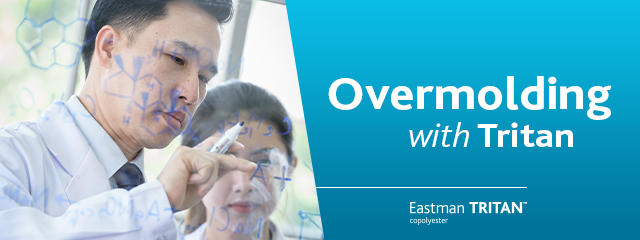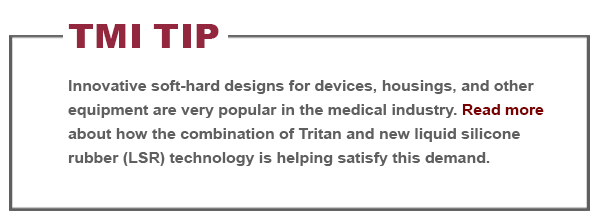Overmolding with Tritan

Using overmolded soft-touch materials can provide many functional and decorative benefits to items made from rigid thermoplastics. Eastman Tritan™ copolyester demonstrates exceptional adhesion with commercial grades of TPE. When selecting the TPE you want to use, make sure it is formulated for use with a copolyester substrate.
Consider these factors for part design:
For more information about using Tritan in secondary operations, download our Secondary Operations Guide.
Consider these factors for part design:
- Optimize part and TPE thickness for adhesion and dimensional stability. If the TPE thickness is in excess of the Tritan part thickness, you could see warpage when you remove it from the mold. Use a substrate thickness twice that of the TPE.
- Incorporate mechanical interlocks to improve TPE adhesion and promote part durability. Mechanical interlocks are important for thin TPE layers and very demanding fitness-for-use requirements.
- Use flow-through designs to improve adhesion and durability. This is especially beneficial for designs incorporating soft-touch features on multiple surfaces.
- Ensure the edge of the TPE is flush with or below the level of the non-overmolded section of the rigid substrate. This will minimize the potential for peeling or delamination.
For more information about using Tritan in secondary operations, download our Secondary Operations Guide.





 Close
Close



